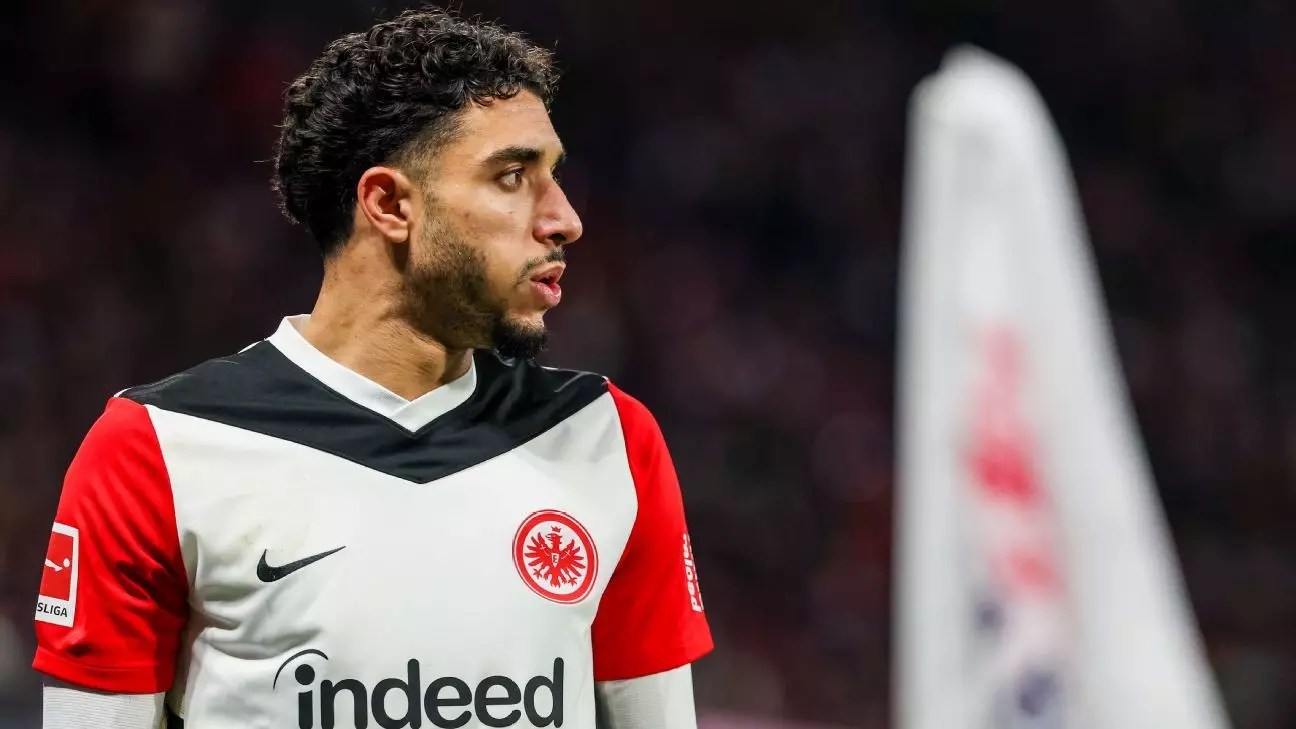The ongoing football transfer window has generated a flurry of activity as clubs scramble to secure the signatures of key players. Whether it’s a young talent eyeing a breakthrough or a seasoned star contemplating a new chapter in his career, the implications of these transfers can reshape squads and influence trophies. This article delves into recent notable transfer news, with an eye on what it reveals about club strategies and player aspirations.
Recently, Manchester City has expressed interest in Eintracht Frankfurt’s Omar Marmoush, reportedly becoming the first club to submit an offer for the sought-after striker. The 25-year-old appears to be intrigued by City’s ambitious project and has already engaged in discussions with their management. This pursuit not only underscores City’s relentless aspiration to remain at the pinnacle of European football but also illustrates their strategy of scouting promising talents to bolster an already strong squad. Alongside City, prominent Premier League clubs like Arsenal, Liverpool, and Tottenham are also monitoring the situation, which could ignite a bidding war if Marmoush’s performances continue to impress.
Such moves are indicative of how top-tier clubs are prioritizing agility in the transfer market. With the pressure of sustaining success, clubs recognize the necessity of innovation through fresh recruits, fostering competition not just domestically but on a continental level.
Meanwhile, the future of Mohamed Salah is set to dominate headlines as his representatives maintain a close dialogue with Paris Saint-Germain. While Salah has hinted at this being his final year with Liverpool, it’s telling that his priority may still be to remain at the club that has defined his career in England. The reports indicate an undercurrent of fluidity concerning his options, with Saudi Arabian clubs lurking in the background, yet no formal overtures have emerged thus far. Salah’s situation exemplifies the duality athletes often face—a commitment to their current club while remaining open to lucrative opportunities abroad.
Such player situations often evoke both player loyalty and the harsh realities of modern football. As clubs prioritize financial viability alongside sporting performance, the prospect of losing a talismanic player like Salah presents both a risk and an opportunity; Liverpool must weigh the potential fallout of his departure against the advantages a substantial transfer fee could bring.
Transfer strategies also hinge on the potential inheritances of talent, as illustrated by Liverpool’s interest in Nottingham Forest’s Elliot Anderson. Having scouted the 22-year-old across numerous matches, Liverpool’s forward planning signals an emphasis on youth recruitment, which could undergird the longevity of the team’s competitive edge. While Forest holds firm with no need to offload Anderson, this type of scouting is indicative of a broader trend where clubs increasingly value youthful exuberance as integral to success.
In contrast, Newcastle United has identified Internazionale midfielder Davide Frattesi as a potential replacement for Bruno Guimarães, should he depart in the future. Valued at approximately €50 million, Frattesi represents a blend of the club’s ambition to maintain a competitive midfield while preparing for inevitable changes. This foresight reveals the strategic dimension of squad management, whereby clubs are not merely responding to immediate needs but also planned structural evolution.
The financial intricacies of football transfers remain glaring, with Borussia Dortmund now demanding a significant fee of at least €30 million for forward Donyell Malen, illustrating the rising valuations of players in the market. Aston Villa’s initial bid highlights the risks clubs face in an environment where perceived value can fluctuate drastically. This dynamic fosters a complex web of negotiations where clubs must balance fiscal prudence with the urgency of solidifying squad depth ahead of crucial seasons.
Additionally, the signing of young talent like Bournemouth’s Matai Akinmboni symbolizes a push towards nurturing future stars. This is increasingly relevant as clubs invest in youth systems, recognizing that longevity in success is often sourced from within rather than through established stars alone.
The current transfer window encapsulates a pivotal moment for clubs navigating ambitions, loyalties, and market trends. With each signing, the narrative of football evolves, reflecting the sport’s insatiable march towards a competitive and unpredictable future. As fans await resolution on these high-stakes negotiations, it’s clear that the delicate balance of talent acquisition and retention will dictate the trajectory of clubs across Europe’s top leagues for years to come.


Leave a Reply